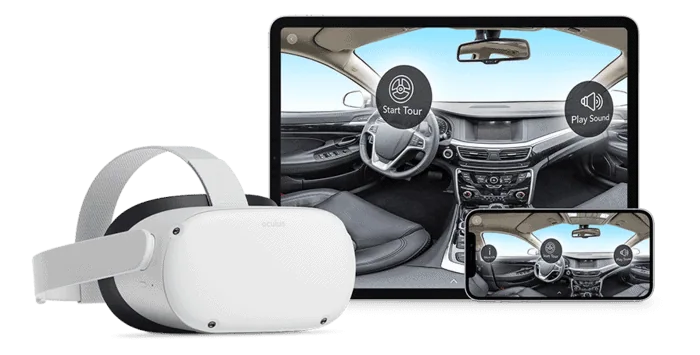How Siemens utilizes Virtual Reality to enhance the employee experience
EHS & QHSE are crucial for employee & factory security
Since these measures are so crucial for the safety of their staff, companies are constantly looking for ways to make EHS training more efficient. Immersive technology like Virtual Reality elevates the learning effect for employees, helping them to grasp the training content faster as well as to apply them more confidently. Siemens has acknowledged exactly this and successfully implements Virtual Reality to train its employees.
What is EHS?
EHS (short for Environment, Health, Safety) is a discipline that focuses on implementing practical aspects of environmental protection, risk reduction and safety at work. When it is combined with Quality Management, it is commonly referred to as QHSE. Other common acronyms are, among others, OHS, SHE, HSSE, QEHS and QHSSE.
Embracing the ”new normal” with Virtual Reality
In collaboration with VRdirect, Siemens created a virtual tour through one of their industrial facilities, digitally depicting the different work places. In this first use case, the virtual tour was complemented by additional and important information on EHS concepts. Users can explore the immersive and interactive training environment on their own while actively engaging with the necessary information. Through adding new features, the Virtual Reality project was continuously developed into a virtual escape game, facing users with a timed challenge where they have to apply everything they have learned to escape a fire emergency scenario.
This way, not only did the Virtual Reality experience make users engage more actively with the learning materials, but it allowed them to immediately test their knowledge in a fun and entertaining way. Using the VRdirect platform, Siemens can easily publish Virtual Reality projects on various devices, meaning VR headsets, mobile devices and PCs. The Escape Game was presented by Siemens at the Health & Safety Week, an internal event focussing on all topics regarding EHS. Staff members of many different departments were able to experience the project via Virtual Reality headsets but could also try out the web version on a PC.

Wide range of applications of Virtual Reality in EHS & QSHE
The unique way Siemens tackles the challenge of training staff for plant security and occupational safety shows the potential of Virtual Reality for EHS training as well as Quality Assurance. There is a broad spectrum of possibilities opening up when using immersive technology. Virtual Reality allows users to experience virtual surroundings up close and in an interactive way. This makes the technology viable for creating virtual simulations (for training & onboarding purposes, for example) as well as for actual simulations of real circumstances. The latter is especially suited for quality control or workplace inspections that can be done remotely.
There are many possible use cases for Virtual Reality in EHS and QSHE, for example:
- Easy onboardings in lifelike workplace surroundings
- Workplace instructions
- EHS & QSHE training sessions with integrated quizzes
- Visitor Center trainings
- Remote workplace inspections
- Quality Assurance
Virtual Reality experiences engage with employees for better EHS / QSHE training results
Virtual Reality allows for immersive experiences even beyond training scenarios
The potential of one Virtual Reality platform as a Virtual Reality mainstream tool for various departments
Interview with Martin Weber, Senior Manager Digital Distribution at Siemens Smart Infrastructure / Distribution Systems / Operational Excellence
To what extent has the introduction of VR technologies contributed to the improvement of your EHS concept?
Very much, it has helped to reach employees in a new and interesting way on certain focus topics. The awareness for EHS is greatly increased by the virtually collected experiences.
How did your employees react to the new VR application?
We’ve had different results – but over 98% of our employees have responded very positively. Reactions went from enthusiasm about the content and technical possibilities to a need for discussion, improvement requests and cause analysis.
Where do you see the decisive advantage compared to the use of “classic” media within your EHS?
The unique selling proposition is the perfectly simulated situation that urges employees to react and thus to act consciously.
This prevents the general public from simply ‘tagging along’ with the crowd in stuffy training rooms. The game-based approach increases the intrinsic motivation of each individual employee.
What were your main reasons for choosing VRdirect?
There were different factors that played into the decision. Mainly the ease of use as well as excellent customer service and the low hardware costs. Also the fast implementation of small projects and their central integration into the existing media landscape were important reasons for choosing VRdirect.



